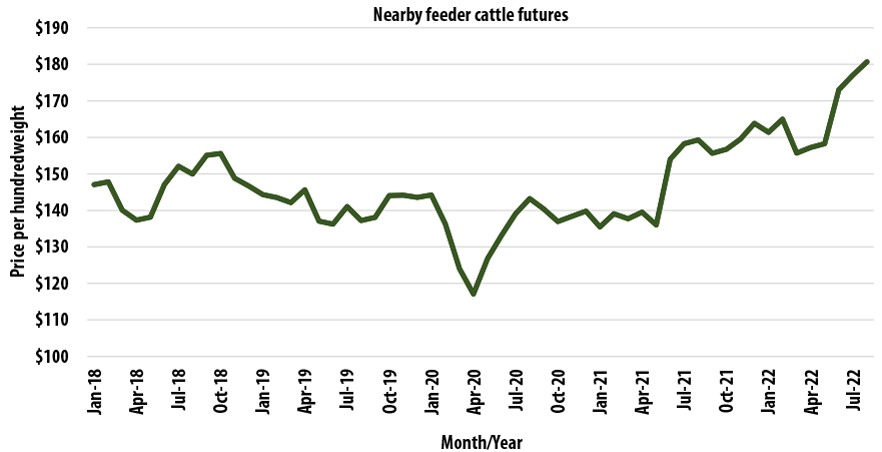Professional Advice: Bagley Risk Management Approaches
Professional Advice: Bagley Risk Management Approaches
Blog Article
Understanding Animals Threat Defense (LRP) Insurance: A Comprehensive Guide
Navigating the world of animals danger protection (LRP) insurance coverage can be a complex endeavor for several in the agricultural field. This kind of insurance supplies a safety and security net versus market variations and unforeseen conditions that could affect animals producers. By comprehending the intricacies of LRP insurance coverage, producers can make informed choices that might guard their operations from financial dangers. From just how LRP insurance policy functions to the various insurance coverage options readily available, there is much to discover in this detailed guide that could possibly shape the way animals manufacturers approach threat management in their services.

Just How LRP Insurance Functions
Occasionally, recognizing the technicians of Livestock Danger Protection (LRP) insurance policy can be intricate, yet breaking down how it works can give quality for farmers and ranchers. LRP insurance is a risk management tool created to protect livestock producers versus unforeseen price declines. It's vital to keep in mind that LRP insurance coverage is not a profits guarantee; instead, it concentrates entirely on price danger security.
Qualification and Protection Options
When it comes to coverage alternatives, LRP insurance coverage uses manufacturers the adaptability to choose the protection degree, protection duration, and endorsements that finest match their threat management requirements. Coverage levels commonly vary from 70% to 100% of the expected finishing value of the insured animals. Manufacturers can also select insurance coverage periods that line up with their production cycle, whether they are guaranteeing feeder livestock, fed livestock, swine, or lamb. Endorsements such as cost risk security can further personalize protection to safeguard against damaging market fluctuations. By recognizing the eligibility requirements and insurance coverage options available, livestock producers can make educated decisions to take care of danger successfully.
Pros and Disadvantages of LRP Insurance Coverage
When assessing Animals Risk Protection (LRP) insurance coverage, it is vital for animals producers to evaluate the benefits and drawbacks integral in this danger management device.

One of the main benefits of LRP insurance policy is its ability to supply protection against a decline in animals prices. In addition, LRP insurance policy supplies a level of flexibility, enabling producers to tailor protection levels and plan durations to suit their details requirements.
One constraint of LRP insurance policy is that it does not shield continue reading this against all types of dangers, such as illness outbreaks or natural disasters. It is essential for producers to thoroughly examine their specific danger exposure and monetary circumstance to figure out if LRP insurance is the best threat monitoring device for their procedure.
Recognizing LRP Insurance Premiums

Tips for Maximizing LRP Advantages
Maximizing the benefits of Livestock Threat Protection (LRP) insurance policy calls for calculated planning and aggressive threat management - Bagley Risk Management. To take advantage of your LRP protection, take into consideration the following pointers:
Routinely Examine Market Conditions: Remain notified regarding market fads and cost fluctuations in the livestock sector. By keeping an eye on these aspects, you can make enlightened decisions concerning when to buy LRP protection to protect against prospective losses.
Set Realistic Coverage Degrees: When selecting coverage levels, consider your manufacturing prices, market value of animals, and prospective threats - Bagley Risk Management. Setting realistic insurance coverage degrees guarantees that you are appropriately safeguarded without overpaying for unneeded insurance coverage
Diversify Your Insurance Coverage: As opposed to relying exclusively on LRP insurance, take into consideration expanding your risk administration strategies. Combining LRP with other danger management tools such as futures agreements or choices can offer comprehensive coverage against market unpredictabilities.
Review and Change Coverage Consistently: As market conditions change, periodically examine your LRP coverage to guarantee it aligns with your existing danger direct exposure. Adjusting insurance coverage levels and timing of purchases can aid optimize your threat security approach. By complying with these tips, you can optimize the advantages of LRP insurance coverage and protect your animals procedure versus unanticipated dangers.
Final Thought
Finally, animals risk security (LRP) insurance policy is a valuable device for farmers to take care of the monetary find more dangers associated with their livestock operations. By recognizing how LRP works, eligibility and protection alternatives, along with the pros and disadvantages of this insurance coverage, farmers can make enlightened choices to shield their source of incomes. By very carefully taking into consideration LRP premiums and implementing strategies to make the most of advantages, farmers can reduce possible losses and make sure the sustainability of their operations.
Livestock manufacturers interested in acquiring Livestock Risk Defense (LRP) insurance policy can discover a variety of qualification requirements and protection options customized to their specific livestock operations.When it comes to insurance coverage options, LRP insurance policy provides producers the versatility to select the insurance coverage degree, coverage period, and endorsements that best suit their danger administration requirements.To realize the complexities of Animals Threat Protection (LRP) insurance completely, comprehending the variables influencing LRP insurance coverage costs is crucial. LRP insurance premiums are determined by various elements, including the insurance coverage degree selected, the anticipated rate of livestock at the end of the coverage period, the kind of livestock being guaranteed, and the length of the coverage duration.Testimonial and Change get more Insurance Coverage Routinely: As market conditions alter, occasionally examine your LRP insurance coverage to ensure it lines up with your existing danger direct exposure.
Report this page